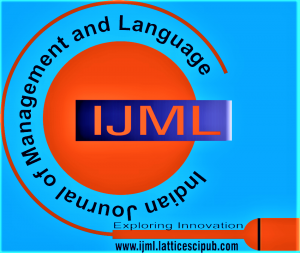![]()
Role of Information Technology on Value Added Tax Compliance in Moshi Municipality
Mary Matiku1, Nyanjige Mayala2, Amembah A. Lamu Amos3
1Mary Matiku, Masters Student, Mwenge Catholic University-Tanzania.
2Dr. Nyanjige Mayala, Lecturer, Mwenge Catholic University Tanzania.
3Dr. Amembah A. Lamu Amos, Lecturer, Mwenge Catholic University Tanzania.
Manuscript received on 14 March 2023 | Revised Manuscript received on 05 April 2023 | Manuscript Accepted on 15 October 2024 | Manuscript published on 30 October 2024 | PP: 51-58 | Volume-4 Issue-2, October 2024 | Retrieval Number: 100.1/ijml.B2062103223 | DOI: 10.54105/ijml.B2062.04021024
Open Access | Editorial and Publishing Policies | Cite | Zenodo | OJS | Indexing and Abstracting
© The Authors. Published by Lattice Science Publication (LSP). This is an open-access article under the CC-BY-NC-ND license (http://creativecommons.org/licenses/by-nc-nd/4.0/)
Abstract: Tax administration issues affect many nations, businesses and individuals. Many nations experience challenges in managing taxes and therefore constantly develop tools and strategies for administering tax effectively. The objective was to determine the role of information technology on VAT compliance. Technology Acceptance Model governed the study, which allow people to adopt technology due to its major constructs, which are perceived ease of use (PEOU) and perceived usefulness (PU). The study used convergent parallel design under mixed approach to collect both qualitative and quantitative data. Total population for this study was 680 registered VAT payers and 8 key informants from Tanzania Revenue Authority management personnel at normal flow unit, which specifically deals with the collection of VAT in Moshi Municipality. Sample size of 251 respondents were obtained through Yamane Formula (2004) from taxpayers in Moshi Municipal. Systematic sampling was used to get respondents during data collection from taxpayers and key informants guide to TRA officers. Primary data was collected using questionnaires and an interview guide. The validity of the research instrument was ensured by research professionals, to check for ambiguities and confusion of the instruments while internal consistency was tested using Cronbach’s alpha coefficient. An Alpha Coefficient of 0.751 was obtained which indicates strong reliability for the study to proceed. The quantitative data was sorted and analyzed using frequency, percentage, mean, and standard deviation. The descriptive statistics were done by using the Statistical Package for Social Science (SPSS). Qualitative data was presented in terms of context and interpreted based on the research objective. The study found that there is a positive impact between information technology and tax compliance and concluded that, IT has increased compliance to VAT traders and improved monitoring and fraud detection to TRA officers. Researcher recommended to TRA office to improve their network availability and system security to protect taxpayers from unintended consequences in terms of privacy, confidentiality, data leakages and cyber security.
Keywords: Information Technology; Value Added Tax (VAT); Tax Compliance; Electronic Tax Filing; Electronic Fiscal Device (EFD).
Scope of the Article: Business Improvement Management
